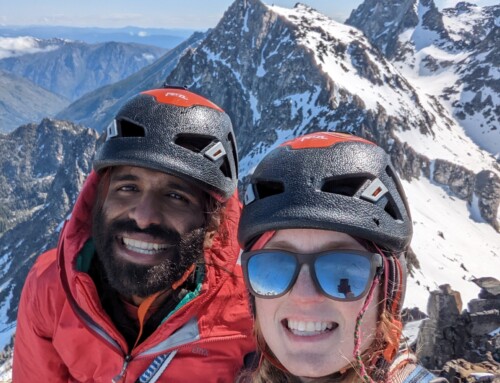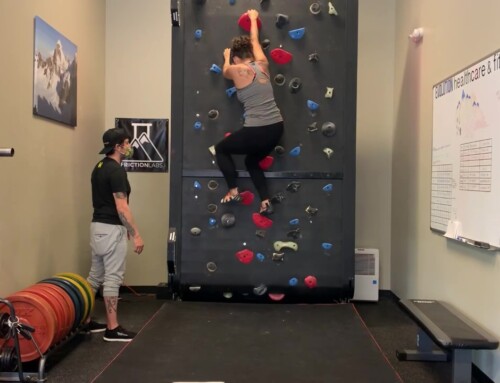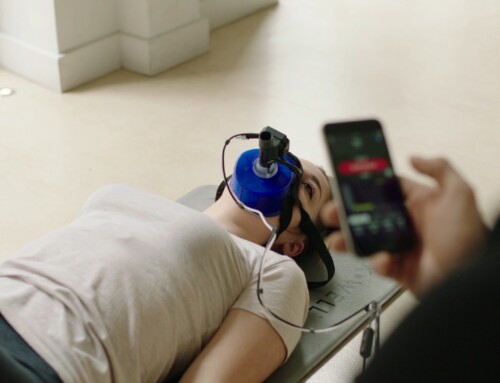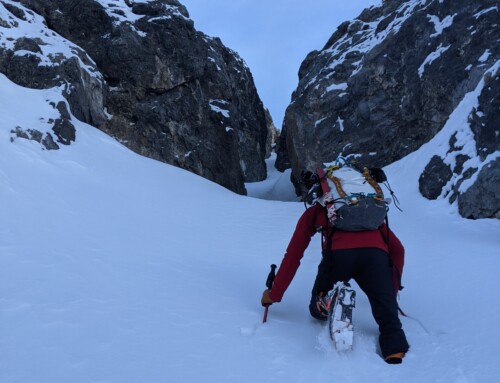Evolution Altitude Room Blog Entry
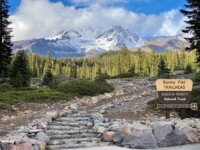
My journey back to the top of Mt Shasta via Avalanche Gulch on 6/20/22 by James Jula
It was 18 years ago this summer that I first attempted Mt. Shasta at a time when I was getting serious about climbing more significant peaks. I took a basic snow climbing course that taught me how to use an ice axe and crampons, how to self-arrest and a few other things. This would be my first 14er, and even though I was really excited, the experience ended up quite miserable. Spoiler alter: it would take me three attempts to get to the top, each with a different challenge, and it was sheer motivation that got me to the top this first time around.
The very first attempt resulted in AMS, Acute Mountain Sickness, just shy of 13 thousand feet. Bad headache, no appetite, intense nausea. My body is very good at letting me know it wants me to stop what I was doing. I ended up bonking due to lack of enough nutrition, and this resulted in stumbling and tripping which is not confidence inspiring on a 35 degree snow slope. I made the tough decision to turn around only to find my condition got worse on the way back down to camp before my appetite slightly returned. Back then my nutrition was not really planned at all. I remember having a bag of GORP, good old raisins and peanuts, and absolutely zero desire to eat it. I also had Gatorade, Clif bars, jelly beans, and jerky, but none of it was appealing and it all made the nausea worse. I’ve since learned part of the problem is that I was eating too many simple sugars. Once I finally ate some jerky and drank some Gatorade back at camp, it was like I was a whole new person again. Oh well, the mountain is still there and I’ll be back.
My second attempt a year later only made it half way up the mountain back up to camp at 10,500’. The winds were supposed to be winding down, but were 40mph at camp, and 70mph on top. The rangers were just leaving to perform two rescues from climbers blown off routes that sustained injuries requiring evacuation. Their parting words of advice were to head home and come back another day. We did exactly that.
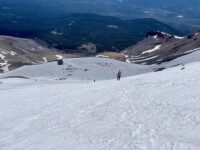
Picture: Looking down on camp at Lake Helen, 10,500’
A few weeks later came the third attempt on a perfect blue sky weekend with low wind conditions. My symptoms were no different than the first time around, but with some diet changes it was more tolerable. My dinner at camp was much lower in sodium this time, many backpacking meals have way too much salt which is not good for our gut biome. I was also armed with Gu shots, foods higher in fat stayed back at camp, and I ate and drank on a schedule no matter how I felt. I remember counting my steps to keep my mind off the nausea and eventually I reached the top of Misery Hill at 13,800’. This is where you first get to see the summit block up close at 14,179’. I’m pretty sure I had tears from there all the way to the top because I knew I was going to make it this time.
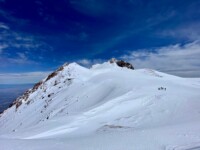
Picture: View on top of Misery Hill
Now in the 17 years since that successful summit, I trained both technically and physically, and climbed quite a bit. I never really enjoyed the higher mountains due to the headaches and nausea, though I managed to get up a couple more 14ers, as well as many others between 10 and 14 thousand. I learned by trial and error that better acclimation worked to make things more enjoyable, but never really had the time to do so fully with work and limited vacation time. Then a little over a year ago, while walking into Smith Rocks for a bit of rock climbing, my shoe snagged a rock and I tumbled down the hill, smashing a knee on a rock. This injury led me to Evolution Healthcare and Fitness.
While going through the work it took to get my knee back to climbing strength, I started using the Altitude Room. At first it was mostly to use the climbing tread wall in the altitude room, but eventually I got curious as to what it could do to help me in the higher mountains. Working with Dr. Brad Farra, he taught me an approach I could use to help prepare for this year’s climbing. It involved using both the Altitude Room and the Everest Summit System (an altitude training system available at Evolution that is separate from the altitude room) so I could consistently get time above 14 thousand feet. I would spend between four and six hours a week at altitude. Some workouts were a simple walk on the treadmill at 16,000 feet altitude and a 10 degree incline at 2mph with my pulse ox in the 75-80% range. Other workouts were between 10,000 and 12,000 feet of altitude and included strength training, time on the climbing tread wall, and interval training. I’d vary the work outs to take advantage of different benefits on the body and to keep it interesting, all the while planning a trek back up Mt Shasta. I was really curious to see if this was going to help.
While training for Shasta, one of the steps along the way was going to be to summit Mt. Hood. I’ve summited Hood eight times or so already, all with a headache and some nausea that routinely started around 10k feet. This was going to be the first test to see how the altitude training was going. I figured it was going to help, but I thought the difference was going to be small enough that it would be hard to know that it helped. This did not turn out to be the case at all. The improvement was so noticeable, that there was no doubt it helped. My breathing was so much easier, it felt as if I was thousands of feet lower throughout the entire day. No headache at 10k, and no nausea either. I did get a weird feverish feeling about 6 hours in, which I had experienced before, but even that was not as bad as it has been on other mountains at similar altitude. So while it didn’t prevent all my symptoms, it made a huge dent in them. To say I was excited would be an understatement.
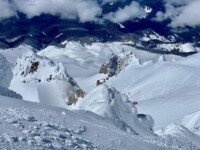
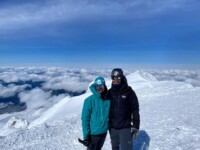
Pictures: Mt. Hood – Crater Rock below and Summit
Then it finally came time to go back up the mountain that started this particular journey. Just like on Hood, the first day into camp at 10,500’ felt great. I had no symptoms up and into camp, but I did get myself into a slight calorie deficit digging out a platform in the snow for our tent. Eating dinner and a touch of rest resulted in feeling good again, then it was off to bed for an early start the next morning.
Waking up at o-dark-thirty I was pretty much ready to go. Got a solid four hours of sleep which is also an improvement over years past this high at camp. Around 4:15am we were off heading up the Gulch.
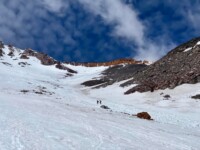
Picture: Avalanche Gulch looking up at the Red Banks (later in the afternoon)
Once again I felt like my breathing was more like that of a hike in the Gorge. My HR was in a normal range for the effort, but it just felt easier. The whole day would go like this. It was still relatively slow going with less oxygen, but there was no need to count steps this time around. My appetite worked, I was actually hungry and didn’t need a timer to know when to eat. This time around I was eating foods much lower in sugar, a mix of UCAN energy bars, UCAN and Carb Boom energy shots, as well as some Aloha protein bars. The fact I never had to force any food down seriously made all the extra work worth it to me!
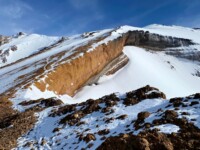
Picture: Above the Red Banks, Misery Hill is highpoint to the right, tiny summit block on the right edge
Making it to the top of Misery Hill this time, there were no tears, I knew I made it again, but so much more, I feel like I finally climbed it the way I always wanted to. That feverish feeling still occurred about six hours in, but perhaps with a bit more time in the Altitude room even that could be improved too.
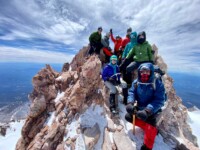
Picture: Mt. Shasta Summit
I now have a tool that can help me enjoy the higher mountains, and this is fantastic! Thank you Evolution and specifically Brad for providing our community with these tools to succeed.


